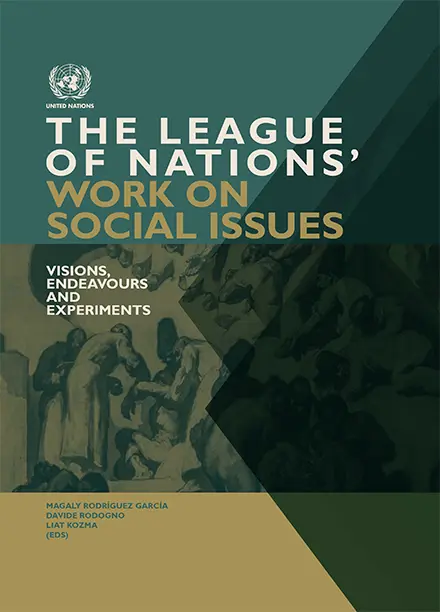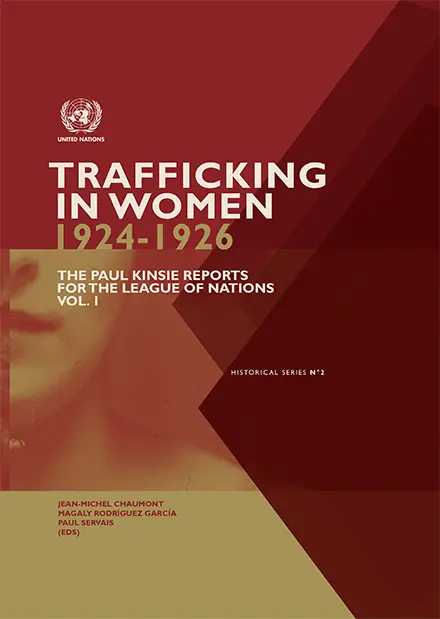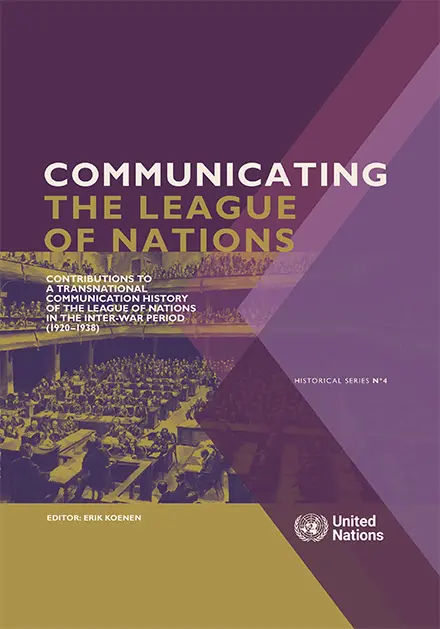
The League of Nations' Work on Social Issues Visions, Endeavours and Experiments
Magaly Rodríguez García, Davide Rodogno, Liat Kozma (eds.)
This edited volume offers a fresh look into the history of the League of Nations. It uses the League of Nations' involvement in social issues as a unique prism for understanding the League's development, as well as the development of interwar international relations more generally. Off the beaten path of diplomatic history, this perspective allows the authors to trace less familiar actors and unexpected alliances. It enables contributors to reassess the League's impact on European societies, their colonial possessions, and non-European states. As such, it also marks a paradigm shift in the League's Eurocentric historiography toward one that acknowledges its global reach.


Trafficking in Women (1924-1926)
The Paul Kinsie Reports for the League of Nations Vol. 1 and Vol. 2
Jean-Michel Chaumont, Magaly Rodríguez García, Paul Servais (eds.)
These books provides a transcription of the reports written by undercover agent Paul Kinsie for the League of Nations Special Body of Experts on Traffic in Women and Children in the mid-1920s. Between 1924 and 1926, a team travelled to more than a hundred cities in Europe, the Americas and the Mediterranean area to interview individuals involved in the regulation, repression, medical control, organization and practice of the sex trade. American undercover agents were included on the team to infiltrate the so-called ‘underworld’ and obtain ‘facts’ about the traffic. Among these, Kinsie was the most prolific. He visited more than forty cities and produced hundreds of reports in which his contacts with prostitutes, brothel owners, madams, pimps and procurers are described in detail. For a proper contextualization of the reports, scholars from around the world were asked to provide short introductions to the situation with regard to prostitution in each city that was visited. The books offer a unique source of information which is of great ethnographic value for people interested in the history of human trafficking and prostitution.
Buy Volume 1 or read online
Buy Volume 2 or read online
Borrow

Geneva, cradle of the League of Nations
Pierre-Etienne Bourneuf
The designation of Geneva as the headquarters of the League of Nations in 1919 was a turning point in several respects. On the one hand, the establishment of the first intergovernmental organization, created to maintain peace and promote international cooperation, thrust the peaceful city on the world diplomatic stage. On the other hand, it posed unprecedented challenges of a material, political, legal and administrative nature that were to mark the city's history and, to a certain extent, the evolution of modern international organizations. By exploring the intertwining of international and local history, this book examines how Geneva became the cradle of a unique multilateral experience and provides an insight into the sometimes little-known legacy of the League of Nations.

Communicating the League of Nations
Contributions to a Transnational Communication History of the League of Nations in the Inter-War Period (1920–1938)
Erik Koenen (ed.)
The volume contributes to a deeper understanding of the complex transnational communication relations of the League of Nations (1920-1946), from the perspective of communication researchers. The authors focused on the reconstruction of internal communication processes within the Information Section, as well as its strategies of external public communication. The complex relationships between organized information practices of the Information Section and the profession on one hand, and the practices of League of Nations’ journalism on the other hand, can be understood as a co-evolution of journalism, public relations and press work. The normative guidelines of the “principle of publicity” and the concept of “open diplomacy” defined media-mediated public communication as an important factor for the legitimization of the League of Nations and its politics.